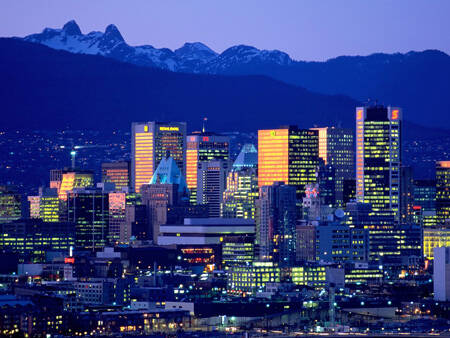Vancouver, Canada
West End Community Plan

Background Information
The West End planning process was guided by a City Council approved Terms of Reference, which outlined the planning principles, geographic scope, planning program, and key products.
Goals of the Initiative
Overall, the plan will guide positive change, development and public benefits in the West End, enhancing it as a diverse, vibrant and distinctive community. The plan has long-range and shorter-term goals, with a 30-year timeframe for implementation.
Key goals include:
•Diversify housing and deepen affordability;
•Protect heritage assets;
•Revitalize local business areas;
•Improve walkability for all ages and abilities;
•Renew and expand public facilities and amenities;
•Maintain the distinctive neighbourhood character.
Innovation for the Initiative
The West End has been continually evolving as a community over the past 130 years, so the West End Plan should be considered evolutionary. The plan incorporates innovative policy that is new for the community (and the city). It helps the community to continue to evolve, capitalizes on opportunities, and recognizes existing strengths. For example, the plan’s Villages strategy seeks to encourage distinct and vibrant local business areas where people can shop, work and play during the day and at night. The plan also includes new density bonusing policy to help achieve secured market rental and social housing. The Laneways 2.0 strategy is also a new approach given the context (high density, established community), and will help improve livability by providing new family-oriented rental housing and green space.
Outcomes and Assessments
The plan integrates all aspects of sustainability. New housing and renewed public facilities will support a diverse community and advance social sustainability. Revitalized commercial streets and opportunities for additional job space will support the local economy. Residents can thus live close to work, shopping, services, and other daily needs, supporting walkability. The plan also sets directions for environmental sustainability through building retrofits, district energy opportunities, and other green initiatives.The scale of the change is primarily at the local (community) level, but it also helps achieve citywide and regional goals. The plan anticipates growth of 10,000 new residents and 7,000 new jobs over the next 30 years. The PBS has 10 and 30 year targets identified for social housing, rental housing, facility improvements, child care, public spaces, utilities, heritage and other priorities. Metrics include the number of new market rental, social housing units, new childcare spaces, facilities renewed and expanded. These targets and metrics allow City staff to monitor plan implementation, track overall progress, and recommend adjustments if targets are not being met in certain areas.The planning process used a variety of consultation methods such as asset mapping, learning sessions, photo contests, ‘walkshops’, surveys, and community circles to ensure wide participation and a diversity of input. Innovative communications tools were used, including social media, videos, 3-D computer model, interactive online map.


 In Focus | World Cities Day: People-Centred Smart Cities
In Focus | World Cities Day: People-Centred Smart Cities City Stories | Fostering community resilience: A lifeline for the Central African Republic
City Stories | Fostering community resilience: A lifeline for the Central African Republic In Focus | Innovative Education, Empowering Futures
In Focus | Innovative Education, Empowering Futures




















 Tel: +86 020 3780 4434
Tel: +86 020 3780 4434 Email: info@guangzhouaward.org
Email: info@guangzhouaward.org Adress: Unit 01-7, 28th Floor, No. 7, Chunrong 3rd Road, Tianhe District, Guangzhou, Guangdong, 510000, PRC
Adress: Unit 01-7, 28th Floor, No. 7, Chunrong 3rd Road, Tianhe District, Guangzhou, Guangdong, 510000, PRC




